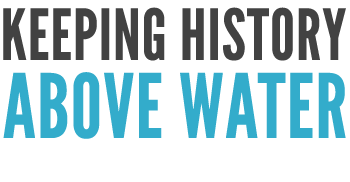12
Apr
4 Lessons from Day 2
Keeping History Above Water, our groundbreaking international conference on sea level rise and historic preservation, kicked off yesterday as preservationists, climate scientists, architects, and many other experts from around the world arrived in historic Newport, RI for a day of open houses, tours, and conversations.

Pieter Roos, Executive Director, Newport Restoration Foundation, opens the day events and introduces Senator Sheldon Whitehouse
Today, however, the real work began with the first of our keynote speakers, panels, workshops, and more. There was so much to learn and so many ideas to share – where do we even begin? Let’s start with some of the common themes that emerged, and the lessons to be drawn from them.
1. People are engaged and they’re ready to get to work.
Today we heard from a US Senator, two climate change experts, government officials from two coastal municipalities, and a historic preservationist – and that was just before lunch. We had students come from URI, Ball State University (IN), Tulane (LA), the University of Pennsylvania, and even North Kingstown High School to present projects in poster form. We had speakers from all over the US, as well as Scotland, Wales, and Iran. And the discussion reached far beyond the Newport Marriott’s ballroom, with tweets coming from all over the country. The Johnson & Wales Culinary School joined the conversation from the Chefs Collaborative Summit in New York City, tweeting at us, “Wondering how aquaculture can be part of solution?”
The message came through loud and clear: people are ready to talk about these issues and, more importantly, they’re ready to do something.
2. Changes are happening all around us and there’s no denying them.
“We created this conference because the environmental threats to coastal heritage sites will not hold off while we debate climate change or its causes. We’re accepting the reality of sea level rise and seeking answers for how to mitigate its impact,” said NRF Executive Director Pieter N. Roos when we announced this conference. We heard this sentiment echoed again and again today by people working at the leading edges of climate change and witnessing its impact firsthand.

Pam Rubinoff, Senior Coastal Manager at the Coastal Resources Center, Graduate School of Oceanography




